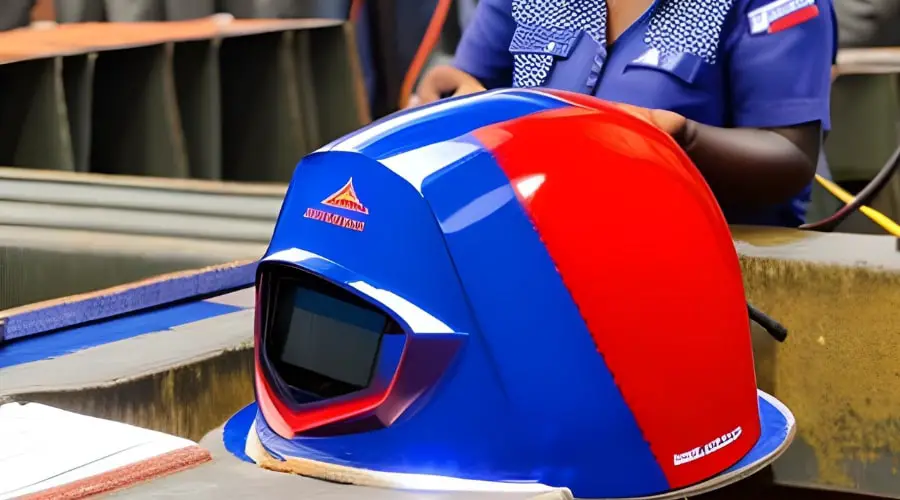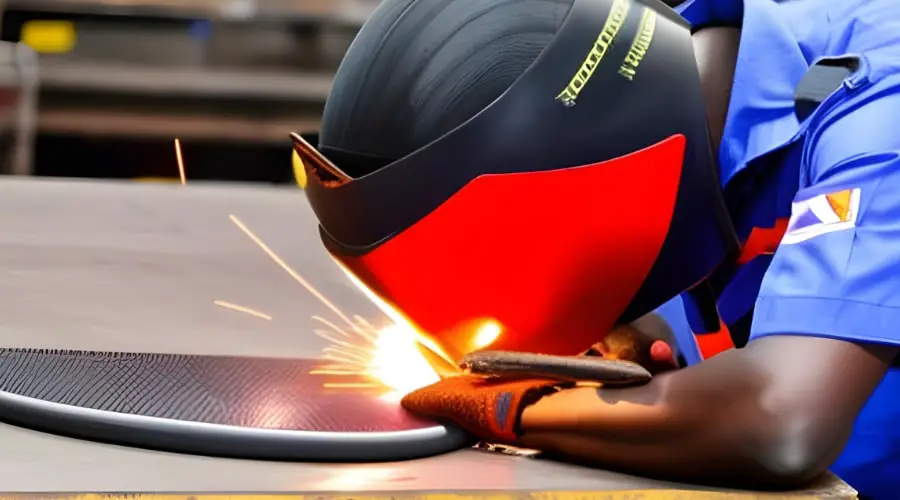Welding is a skilled trade that requires precision, expertise, and, most importantly, safety. Among the various safety equipment employed by welders, welding helmets play a pivotal role in protecting their eyes and face from the hazards associated with welding. But have you ever wondered how welding helmets actually work? In this comprehensive guide, we will delve deep into the inner workings of welding helmets, shedding light on their design, technology, and features. So please put on your safety goggles, fasten your seatbelt, and let’s embark on a journey to uncover the secrets of how welding helmets work.

How Welding Helmets Work: A Closer Look
The Lens: The Window to the Welding World
A crucial component of a welding helmet is its lens. This lens filters harmful ultraviolet (UV) and infrared (IR) rays emitted during welding while allowing sufficient visible light to pass through for optimal visibility. Equipped with advanced technology, modern welding helmets feature auto-darkening lenses that adjust their shade level according to the intensity of the welding arc, offering welders the convenience of not having to adjust the helmet manually.
Sensors: Detecting the Arc
To ensure prompt and accurate adjustment of the lens shade, welding helmets are equipped with sensors that detect the presence of the welding arc. These sensors act as the eyes of the helmet, instantly responding to the bright light emitted during welding. Upon sensing the arc, the sensors send a signal to the lens, triggering the auto-darkening mechanism to darken and shield the welder’s eyes.
Auto-Darkening Mechanism: Adapting to the Welding Environment
The auto-darkening mechanism is the heart of a welding helmet, responsible for adjusting the lens shade and protecting the welder’s eyes. This mechanism employs liquid crystal display (LCD) technology and a combination of sensors, batteries, and circuitry to control the lens’ transparency. When the sensors detect the welding arc, the LCDs darken the lens within milliseconds to provide optimal protection. As the arc ceases, the lens gradually returns to its default state, allowing the welder to inspect their work without the need to lift the helmet.
Power Source: Energizing the Helmet
Welding helmets require a power source to operate the sensors, auto-darkening mechanism, and other electronic components. This power source typically comes in the form of replaceable batteries or rechargeable batteries, ensuring a consistent supply of energy for the helmet’s functionality. Some advanced models even incorporate solar panels to harness natural light as an additional power source, offering extended battery life and reducing the need for frequent battery replacements.
Headgear: Ensuring Comfort and Safety
While the lens and auto-darkening mechanism take center stage in the functionality of welding helmets, the headgear plays a vital supporting role. The headgear, consisting of adjustable straps, a ratchet system, and comfortable cushioning, ensures a secure and snug fit on the welder’s head. Additionally, it allows the helmet to be easily adjusted to accommodate different head sizes and provides stability during welding tasks, enhancing both comfort and safety for the wearer.
Respiratory Protection: Shielding against Fumes
In addition to protecting the eyes, welding helmets can be equipped with respiratory protection to safeguard the welder against harmful fumes and particulates. Some helmets incorporate built-in respiratory systems, such as
Built-In Respiratory Systems: Breathing Easy
Certain welding helmets are designed with built-in respiratory systems, providing an added layer of protection against welding fumes. These systems typically consist of filters and a fan mechanism that effectively captures and filters out harmful particles, ensuring the welder breathes clean air while working. This integrated respiratory protection minimizes the need for separate respiratory equipment and enhances the overall safety and comfort of the welding experience.
Additional Features: Enhancing Convenience and Functionality
Modern welding helmets often come with additional features to enhance convenience, productivity, and overall user experience. Some of these features may include:
- Grind Mode: This mode allows welders to switch the helmet to a lighter shade or even a clear state, enabling them to perform grinding or other non-welding tasks without removing the helmet.
- Sensitivity Adjustment: Welding helmets offer the flexibility to adjust the sensitivity of the auto-darkening mechanism, allowing welders to customize the response time and shade level according to their specific welding requirements.
- Delay Control: The delay control feature enables welders to adjust the time it takes for the lens to transition from the darkened state back to the default state after the welding arc ceases. This allows for precise control and reduces eye strain during the transition.
- External Controls: Some welding helmets feature conveniently placed external controls, such as buttons or knobs, that allow welders to easily adjust settings without removing the helmet.
- Compatibility with Accessories: Many welding helmets are designed to be compatible with additional accessories, such as magnifying lenses, protective plates, or even integrated safety goggles, providing welders with added versatility and protection.

Frequently Asked Questions:
1. How does the auto-darkening feature in welding helmets function?
The auto-darkening feature in welding helmets utilizes sensors that detect the presence of the welding arc. When the sensors sense the bright light emitted by the arc, they send a signal to the lens, triggering the auto-darkening mechanism to darken the lens and protect the welder’s eyes.
2. Can welding helmets protect against all types of radiation?
Welding helmets are designed to protect against harmful ultraviolet (UV) and infrared (IR) radiation emitted during welding. However, they may not provide sufficient protection against other forms of radiation, such as X-rays or gamma rays, which are typically not encountered in welding processes.
3. Are all welding helmets equipped with the auto-darkening feature?
No, not all welding helmets have the auto-darkening feature. While it is a common and highly desirable feature in modern welding helmets, some helmets that require manual lens shade adjustment are still available.
4. How long does the battery in a welding helmet last?
The battery life in a welding helmet can vary depending on factors such as usage patterns, the type of battery, and the specific model of the helmet. Generally, replaceable batteries can last several hundred hours of welding, while rechargeable batteries may provide extended usage time before recharging.
5. Are welding helmets one-size-fits-all?
Most welding helmets come with adjustable headgear, allowing them to accommodate various head sizes. However, selecting a helmet that fits securely and comfortably is essential to ensure proper protection and minimize any potential discomfort during prolonged welding tasks.
6. Can welding helmets be used for other applications besides welding?
While welding helmets are primarily designed for welding applications, certain models may offer additional functionality, such as grind mode, which allows them to be used for tasks like grinding or cutting metal without removing the helmet.
Conclusion
Welding helmets are not merely accessories but indispensable tools that ensure the safety and well-being of welders. Understanding how welding helmets work sheds light on the intricate technology and features that make these helmets an essential component of any welding setup. Each element provides optimal protection and visibility during welding operations, from the lens and sensors to the auto-darkening mechanism and power source.
Helmetslab is a website that focuses on providing in-depth reviews and information about different types of helmets, including motorcycle helmets and others helmets. I am writing a post with proper research on the info that helps helmet users.
